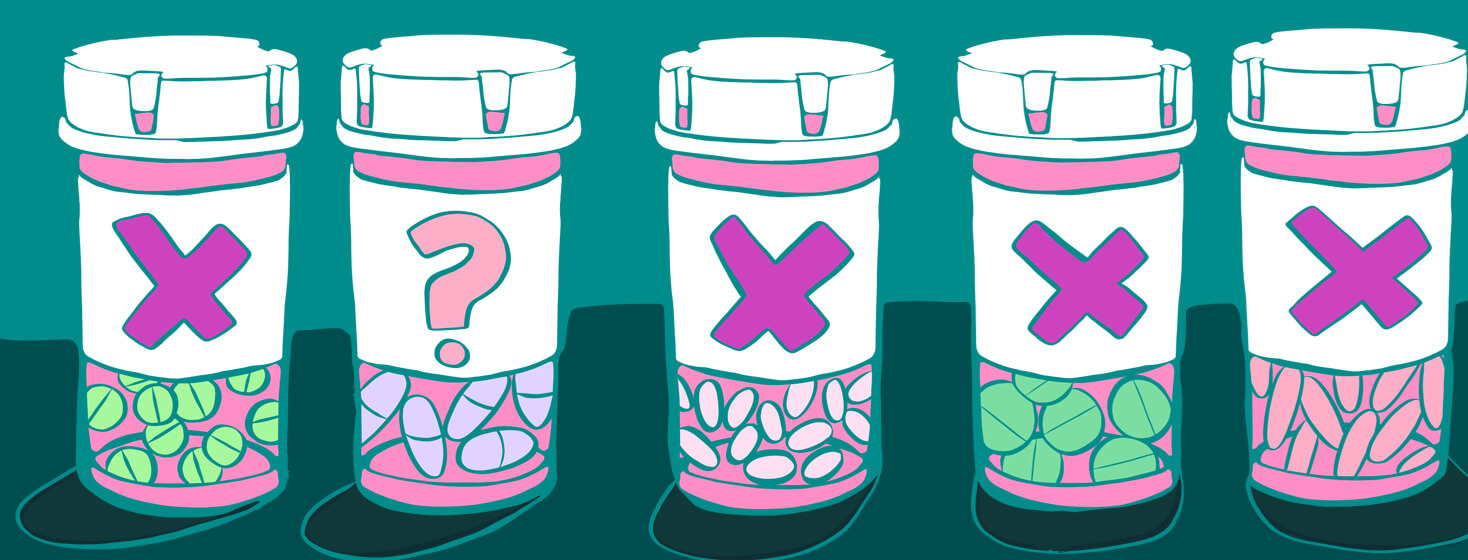When Nothing Works to Control Seizures
When my daughter was diagnosed at 6 months old with a rare form of epilepsy called infantile spasms, I knew very little about the disease. My ideas regarding epilepsy and seizures were largely informed by movies and TV.
I pictured large tonic-clonic (previously called grand mal) seizures complete with shaking, twitching, and eye-rolling. I had no idea there were multiple types of seizures. I had no idea how epilepsy was diagnosed. I had no idea the causes of epilepsy. I had no idea epilepsy, especially in children under the age of 2, can be catastrophic to development. And perhaps even more naively, I thought epilepsy could be easily controlled with medication.
Drug-resistant epilepsy
After the second medication failed to control my daughter's seizures, I began hearing the terms "refractory" and "intractable" used to describe her epilepsy. I Googled and found the following definitions:
- Refractory. adjective. Stubborn or unmanageable.
- Intractable. adjective. Hard to control or deal with.
My daughter's epilepsy was hard to control and unmanageable. This meant that her seizures were unlikely to be stopped with medication. This can also be called "drug-resistant epilepsy."
According to the Epilepsy Foundation, it is thought that as many as 1/3 of all epilepsy patients experience drug-resistant epilepsy. Currently, 3.4 million people are living with epilepsy in the United States. This means about 1.1 million people are experiencing seizures that are difficult to control with medication.1
To my dismay, my daughter is one of those individuals.
When anti-seizure medications fail
According to research, if a patient does not respond to the first AED (anti-epileptic drug) they try, they have a less than 11% chance of responding to a second. Trying a third AED drops the likelihood down to 5%. A fourth regime of an AED and the chance of seizure-control is less than 5%.2
My daughter has tried over 13 AEDs and she is only 2.5 years old.
Other treatments for seizure control
Fortunately, there are other options for individuals with refractory epilepsy including brain surgery, a medical ketogenic diet, a VNS implant, and more. Unfortunately, my daughter has tried all 3 of these options and still has seizures every single day.
So, what happens when you have tried medications, surgical options, and diet therapy but your child (or you) are still having seizures? For us, we have been forced to live alongside seizures. At first, I remember feeling like we were giving up and failing our daughter. How do we go from trying to stop seizures at all costs to accepting she is unlikely to be seizure-free?
Accepting this reality is hard
The truth is, it didn't happen overnight, and there are many days when I still struggle to grasp our reality. The reality that every time my daughter wakes up in the morning or wakes up from a nap, she will have a seizure that lasts anywhere from 5 to 20+ minutes. The reality that the seizures and resulting treatments have radically impacted her development to the point that she has permanent physical and cognitive disabilities. The reality that research on new treatments for infantile spasms – and epilepsy, in general – receive significantly less funding than other diseases.
However, I've refused to let epilepsy control our life and control my daughter's life. Accepting that her seizures may never be controlled is a difficult pill to swallow, but it is the only way forward.
Forging forward with drug-resistant epilepsy
We slowly try new treatments. We diligently track each new medication change and each seizure to see if we see any semblance of a pattern. We look at side effects and weigh the pros and cons of these side effects with the impact on her development. Some medications that have worked the best made her too lethargic to engage in the world. So we've made the excruciating decisions to allow seizures to be a bit worse in order to let me daughter's sparkling personality and beautiful smile shine through.
When epilepsy cannot be controlled by medication, it is terrifying and heartbreaking. However, I'm here to tell you that there is a path forward, and most importantly, you aren't alone.

Join the conversation